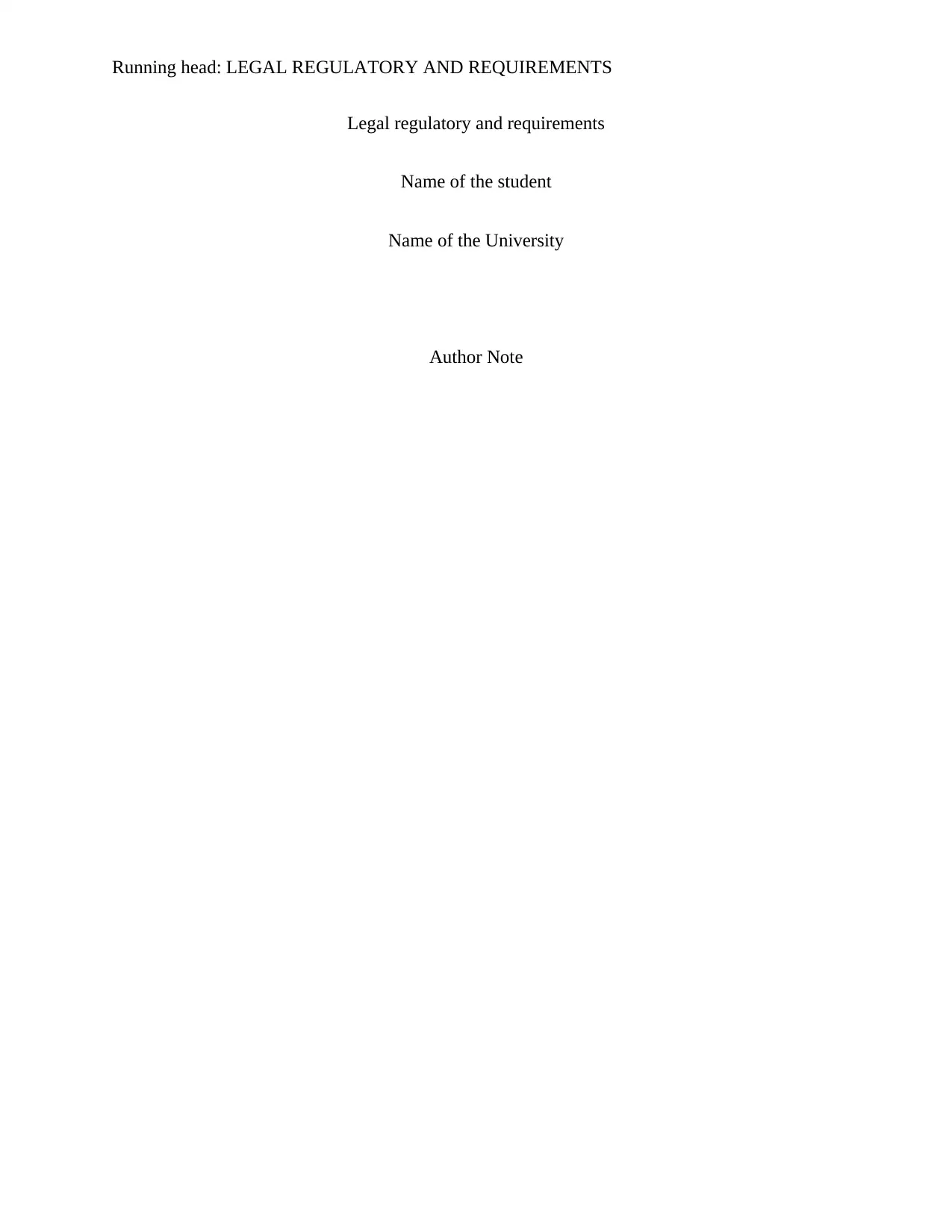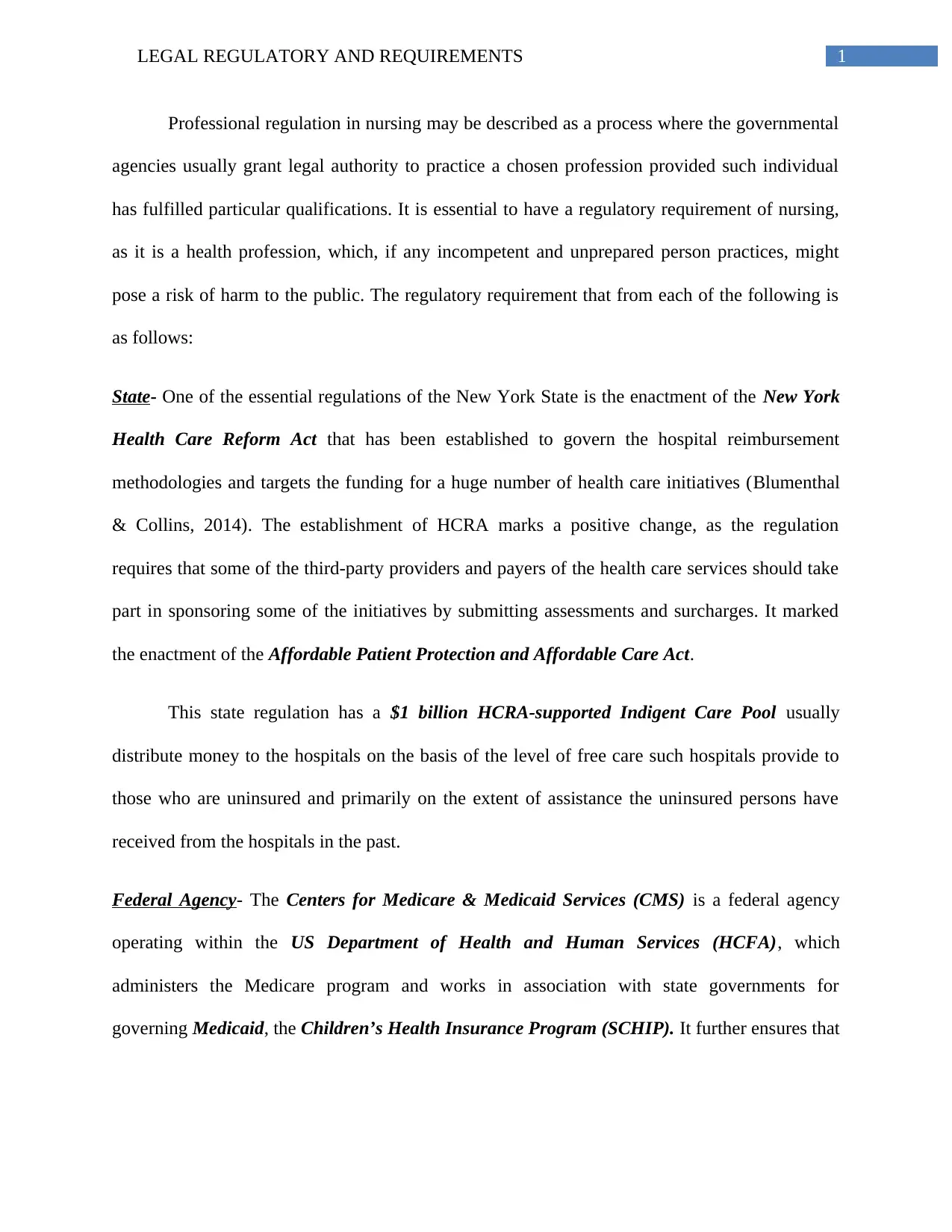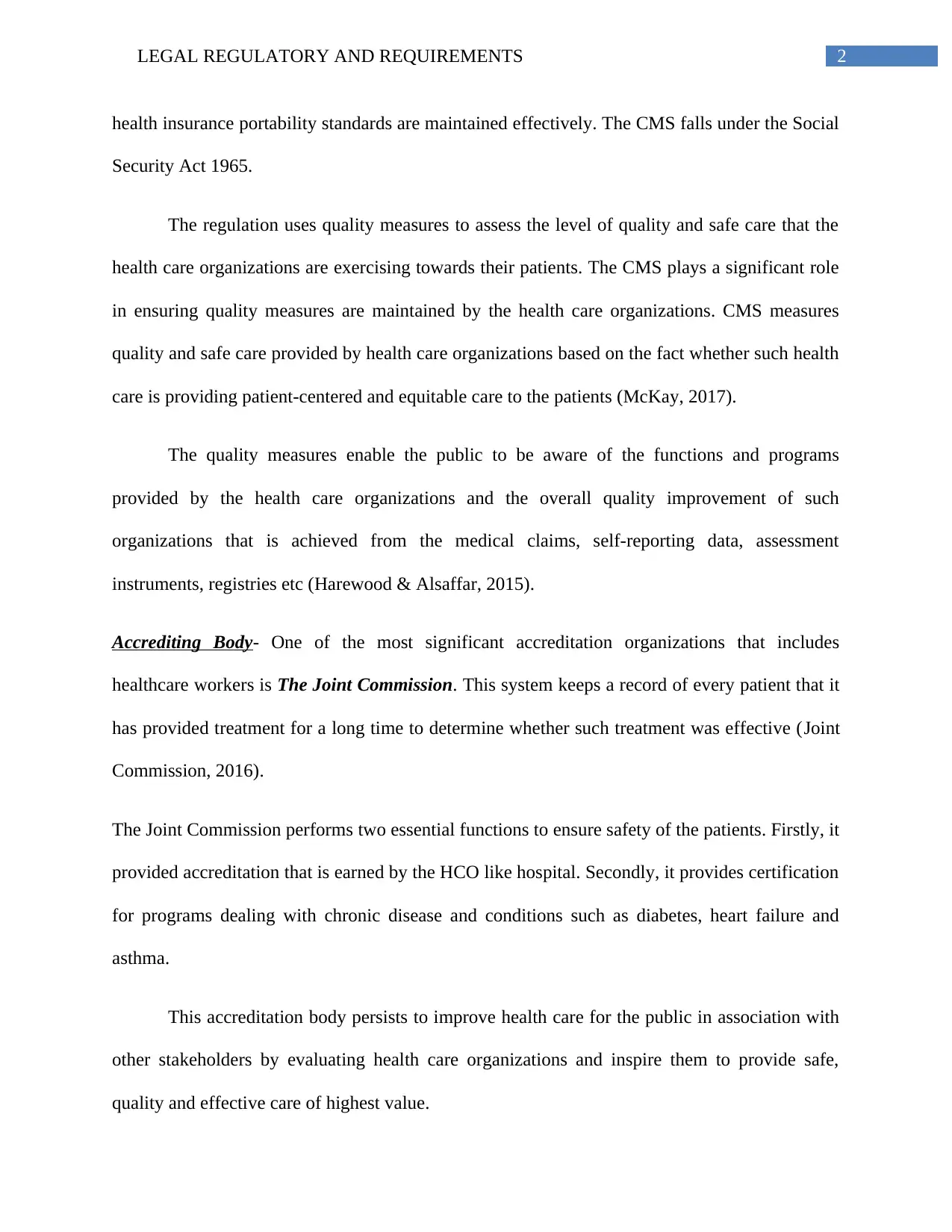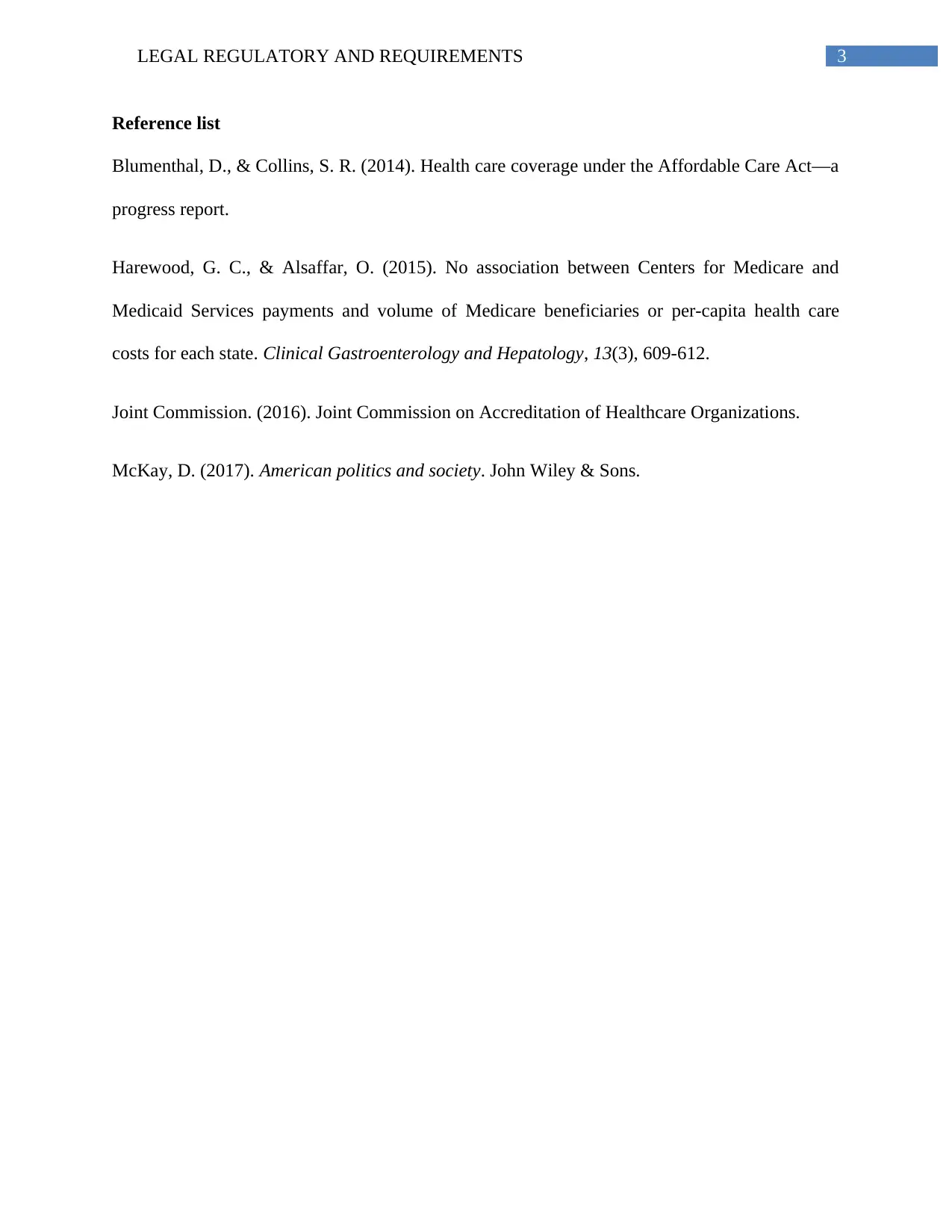Legal Regulatory Requirements in Nursing: A Comprehensive Analysis
VerifiedAdded on 2020/05/16
|4
|720
|96
Report
AI Summary
This report delves into the legal and regulatory requirements governing nursing practice, focusing on the roles of state regulations, federal agencies like the Centers for Medicare & Medicaid Services (CMS), and accrediting bodies such as The Joint Commission. The analysis highlights the New York Health Care Reform Act (HCRA) as a significant state regulation, emphasizing its impact on hospital reimbursement and healthcare initiatives. The report also examines the CMS's function in administering Medicare and Medicaid, ensuring health insurance portability, and using quality measures to assess the safety and quality of care provided by healthcare organizations. Furthermore, it explores The Joint Commission's role in accrediting healthcare organizations and certifying programs for chronic diseases, thereby improving healthcare standards and patient safety. The report underscores the importance of these regulations in maintaining patient safety and ensuring quality healthcare delivery.
1 out of 4











![[object Object]](/_next/static/media/star-bottom.7253800d.svg)